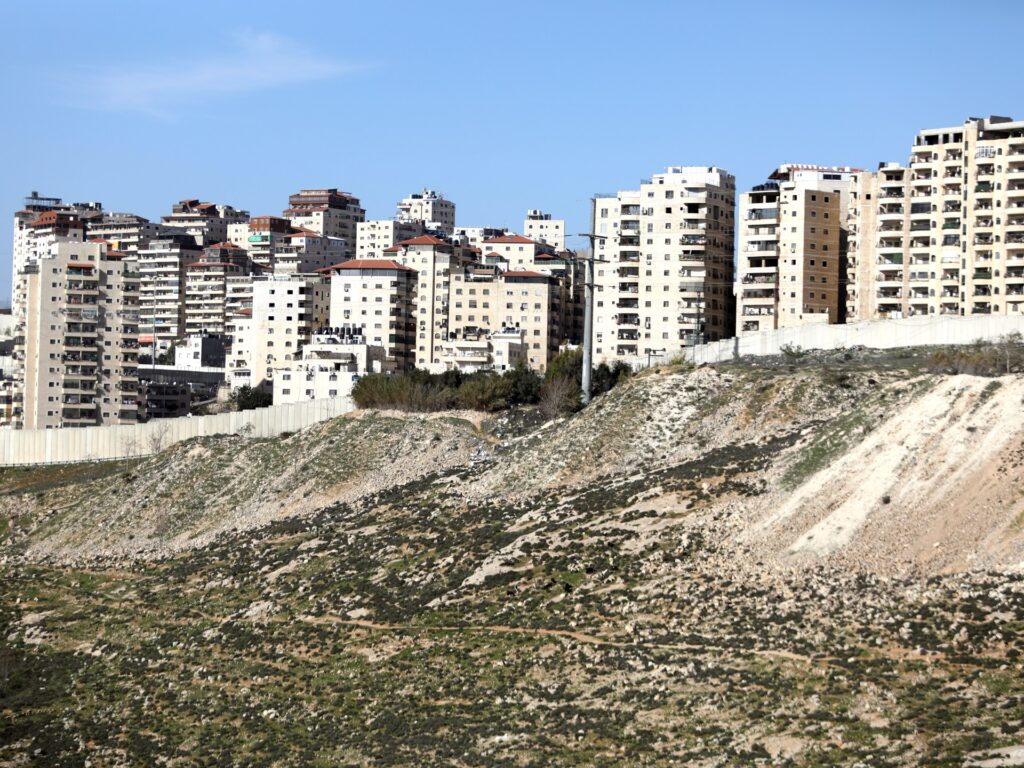Tel Aviv Tribune Net correspondents
Occupied Jerusalem – The people of the town of Issawiya in Jerusalem – especially those who live on its outskirts – will not only wake up to the sight of the separation wall that distorts the public space and separates them from the towns of Anata and the Shuafat refugee camp, but they will from now on live with the noise of trucks unloading their loads of waste at the Soduq landfill recently on Its establishment is meters away from their homes.
The plan for this settlement project was presented for the first time in 2012, and included the establishment of a waste dump on an area of 520 dunums owned by Jerusalemites from the towns of Al-Issawiya and Anata. After submitting a collective objection, the plan was re-presented again in 2022 on an area of 410 dunums.
The residents objected again, with the help of the “Civil Coalition for Defending the Rights of Palestinians in Jerusalem” and the “Planners for Planning Rights” Association (Bimkom), and a new plan was recently issued to reduce the area of the landfill to one-fifth and establish it on an area of 109 dunums.
Environmental damage and impacts
Hani Al-Issawi, a member of the civil committee for the residents of the town of Al-Issawiya, told Tel Aviv Tribune Net that the residents fought battles to completely destroy this project, but they only succeeded in reducing its area.
He added that the objection came because of the damage that will result from the construction of this landfill in terms of land confiscation on the one hand, and the environmental impacts and noise that will be caused by the trucks transporting the waste and the machines that will break up the solid waste on the other hand.
Objections to this settlement project were not limited to landowners only, according to Al-Issawiya, but residents of the surrounding neighborhoods participated in it as it is very close to homes, as the Shuafat camp, with its five neighborhoods, is inhabited by 130,000 Jerusalemites, in addition to 22,000 people living in the town of Al-Issawiya.
What makes matters worse is that the project was originally planned to be a site that would receive waste resulting from the remains of settlement construction projects and Israeli housing units, according to what Al-Issawi stated.

Rejecting Palestinian plans
Al-Issawi says, “We are not the ones who caused this waste, but we are forced to receive it on our lands so that the valley is buried with construction waste and then turned into a park when it becomes at street level. The establishment of this landfill comes after the settlers objected to a landfill that was established near the “Neve Ya’akov” settlement. It was closed after the objection and moved to “Close to us.”
Although the people of Al-Issawiya took the initiative to prepare and submit a structural plan for the town in which they annexed the lands located in the landfill area, it was rejected on the grounds that there was no possibility of constructing a road to that area. However, according to Al-Issawiya, the waste landfill plan now includes constructing a tunnel for waste trucks to pass through.
This comes within the racist Israeli policies in the city of Jerusalem, as the residents of Issawiya are now deprived of urban expansion on their lands because of this dump.
According to Al-Issawi, the total area of the town’s lands is 10,470 dunums (a dunum = a thousand meters), and the residents live on only 1,040 dunums of it, and they control only 3,500 dunums of the town’s total area.
The occupation surrounds this town either with settlements on the French Hill side, or with settlement projects and institutions such as the Hebrew University building and Hadassah Hospital (Issawiya branch), or with bypass streets. The waste dump is now being built on its northern side to tightly encircle and suffocate it.
Long term goals
Settlement affairs expert Khalil Al-Tufakji says that one of the claims made during the objection stages is that the project will lead to the evacuation of a Bedouin community living in the area, and that confiscating the lands is a measure that violates international law.
Al-Tafakji added, in his speech to Al-Jazeera Net, that the plan has political goals, as the Israeli authorities do not want Palestinians to live in this area because they want to clear it of them, so that this will allow the streets to connect the settlements located outside the borders of the municipality of Jerusalem with those located inside it through this place.
The waste dump area is supposed to become a natural extension of the street, an open area after the valley is filled with construction waste and the place is transformed into a park to be classified as a “natural reserve” that cannot be infringed upon in the future.
Architect and Director General of the Bimkom Association, Efrat Cohen-Bar, said in a previous press statement, “The excess dirt resulting from development projects in Israeli neighborhoods is like a finger in the eye for the residents of East Jerusalem, who are not served by these projects at all.”
She added in her statement that the state severely limits development and construction in Palestinian neighborhoods, and the only waste that is generated there is the result of the demolition of homes only, and it was not right to plan such a polluting station on private land in East Jerusalem.

